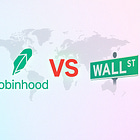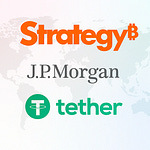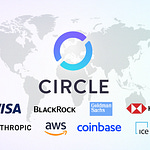Hey, it’s Marc.
The big story this week: Stripe is launching its own “blockchain for payments.” Circle has Arc. Google has GCUL. Who's operating the nodes? How decentralized is this? How do the validator economics look like?
Here’s the truth: these aren’t blockchains. They’re databases with extra cryptography and political and legal overhead.
Meanwhile, the real progress is happening in open protocols: Ondo moving stocks on Ethereum, Galaxy putting its equity on Solana, and Aave turning RWAs into collateral.
Interesting fact: For the first time, public companies now hold over 1M Bitcoin, nearly 5% of the supply. In just five years, corporate treasuries have amassed $110B in Bitcoin, echoing gold’s role as a reserve asset.
👉 Crypto Treasury Alpha: We launched another newsletter covering institutional moves and digital asset treasury vehicles. Subscribe below 👇
Also, our highlights this week:
Stripe and Paradigm launch Tempo, its L1 for payments
Fireblocks launches the Network for Payments
Ondo lists 100+ tokenised U.S. stocks and ETFs on Ethereum
Galaxy puts Nasdaq stock directly onchain
Aave turns RWAs into DeFi collateral
And much more.
Top Boardroom Reads
Why Digital Asset Adoption Is Accelerating (Goldman Sachs). An interview with Matthew McDermott, Global Head of Digital Assets.
DeFi Is Following The SaaS And Fintech Playbooks (Ark Invest). It explores the evolution of Decentralised Finance (DeFi), drawing parallels to historical unbundling and rebundling cycles observed in SaaS and fintech industries.
The New Entertainment Economy (Fiftyone). A webinar with industry leaders and builders from CreatorFi, EVEN, and Republic Film unpacking blockchain as an infrastructure in the music and entertainment space.
6 myths about privacy on blockchains (a16z crypto). It addresses six common misconceptions about privacy on blockchains, emphasising that concerns about new technologies and privacy are not new, dating back to the telegraph.
Money’s new operating system (51). An fintech-focused stablecoin report.
The Great Chain Debate (Maja Vujinovic). Explores in a why centralzed blockchains from Stripe and Cricle won’t win. We agree.
🙌 Work with us: We create pioneering thought leadership that helps digital asset and technology companies lead the conversation, earn trust and win business.
Top Signals This Week
Stripe builds its own blockchain
Stripe and Paradigm just launched Tempo, a blockchain purpose-built for payments. Co-designed with Visa, Deutsche Bank, Shopify, Nubank, OpenAI, and Anthropic, it comes with features like fiat-denominated fees and batch transfers (critical for payrolls and remittances, irrelevant for trading). [RELEASE]
So what? Stripe isn’t saying “Tempo is the stablecoin chain.” They’re saying “Tempo is the payments chain.” It is working with top banks, which can plug their tokenised deposits into their infrastructure. Plus, Tempo’s design, fiat-denominated fees and batch payments are positioning it as the “neutral”, Stripe-grade settlement layer for finance.
Our take: This is Stripe’s play to control the money rails. Just like Google with GCUL and Circle with Arc, the strategy is simple: own the chain, own the money.
But here’s the catch: corporate blockchains always face the same wall: they can’t solve the trust problem. IBM’s Hyperledger fizzled, Meta’s Libra collapsed under regulatory pressure. Institutions like BlackRock or governments won’t settle trillions on rails owned by one company. They need neutral, credibly open infrastructure.
Fireblocks launches the SWIFT of stablecoins
What happened: Fireblocks unveiled its Network for Payments, already processing $200B/month in stablecoin flows across 300+ firms, 40+ providers, and 100+ countries. Participants include Circle, Bridge (Stripe’s $1B acquisition), and major OTC desks, PSPs, and banks. The single API lets companies move, convert, and settle stablecoins globally without stitching together fragmented rails. [RELEASE]
So what: Unlike Stripe’s Tempo (payments-focused L1) or Circle’s Arc (USDC-centric), Fireblocks isn’t building its own chain. It’s building the connectivity + orchestration layer across all chains and issuers. Think SWIFT, but for stablecoins:
Multi-issuer: Supports USDC, USDT, PYUSD, EURC, and others
Multi-rail: Works across blockchains, banks, and on/off-ramps
This neutral position matters. Again: No one wants to settle trillions on rails owned by one firm. Fireblocks sidesteps that trap: it doesn’t care which stablecoin or chain wins, it just moves the money.
Punchline: While Stripe and Circle fight to own the rails, Fireblocks may quietly own the plumbing. And in payments, plumbing is where the real power sits.
📈 Ondo puts 100+ U.S. stocks on Ethereum
What happened: Ondo Finance launched Ondo Global Markets, offering more than 100 tokenized U.S. stocks and ETFs on Ethereum, with support for Solana and BNB Chain to follow. Assets are backed 1:1 by U.S.-registered broker-dealers, transferable onchain 24/7, and integrated with wallets and protocols like BitGo, Ledger, 1inch, and LayerZero. [NEWS]
So what: Stablecoins exported the dollar. Ondo wants to export the entire U.S. stock market.
Access: Ondo plans to scale to 1,000 assets by year-end, giving eligible investors in APAC, Europe, Africa, and LatAm onchain access to U.S. equities.
Liquidity: Tokens plug into DeFi rails for lending, collateral, and yield, beyond just “buy and hold.”
Scale: Competes directly with Kraken’s xStocks, Robinhood’s EU tokenized equities, and Coinbase’s pending U.S. tokenized stock play.
The implications are massive for emerging markets. Buying U.S. equities today often requires complex FX, intermediaries, and high fees.
Galaxy puts Nasdaq stock directly onchain
Galaxy Digital just became the first Nasdaq-listed company to tokenise its SEC-registered public equity directly on Solana via Superstate’s Opening Bell. Unlike wrappers or synthetics, these tokens are legal GLXY shares with real shareholder rights, updated in real-time by Superstate as transfer agent. [RELEASE]
So what? Most tokenised stocks so far (Kraken xStocks, FTX-era synthetics) were derivatives without issuer participation. In Galaxy’s model, shares are issued and recognised by the company itself, unlocking direct regulatory legitimacy and legal clarity. This signals that if equities can live onchain with full compliance, capital markets infrastructure is about to compress settlement times from days to seconds.
Aave turns RWAs into DeFi collateral
Aave just launched Horizon, a lending market where institutions can borrow stablecoins against tokenised Treasuries, loans, and funds. At launch, collateral comes from Circle, Superstate, and Centrifuge, with backers like Ripple, VanEck, and WisdomTree in the mix. [RELEASE]
So what? Until now, tokenized Treasuries and other RWAs were largely dead weight in DeFi, isolated from lending markets and capital-inefficient. Horizon changes that by making RWAs productive collateral. Qualified investors can post RWAs and borrow stablecoins; anyone can supply stablecoins (RLUSD, USDC, GHO) and earn yield from institutional borrowers.
News Flash
US SEC unveils agenda to revamp crypto policies, ease Wall Street rules
FIS launches AI-powered treasury suite. Link
VersaBank USA launches pilot for tokenised, FDIC-insured deposit receipts. Link
~40% of daily code at Coinbase is AI-generated. Link
Trump family secures $5B paper fortune from WLFI crypto token launch. Link
Gemini just launched an XRP-branded credit card with Ripple. Link
That’s all for now, folks.
Take care
– Marc & Team
🚀 Work with us: We create pioneering thought leadership that helps digital asset and technology companies lead the conversation, earn trust and win business.
Check out our AI newsletter, AI Operator, here.
Check out our Crypto Treasury Alpha newsletter here.
















